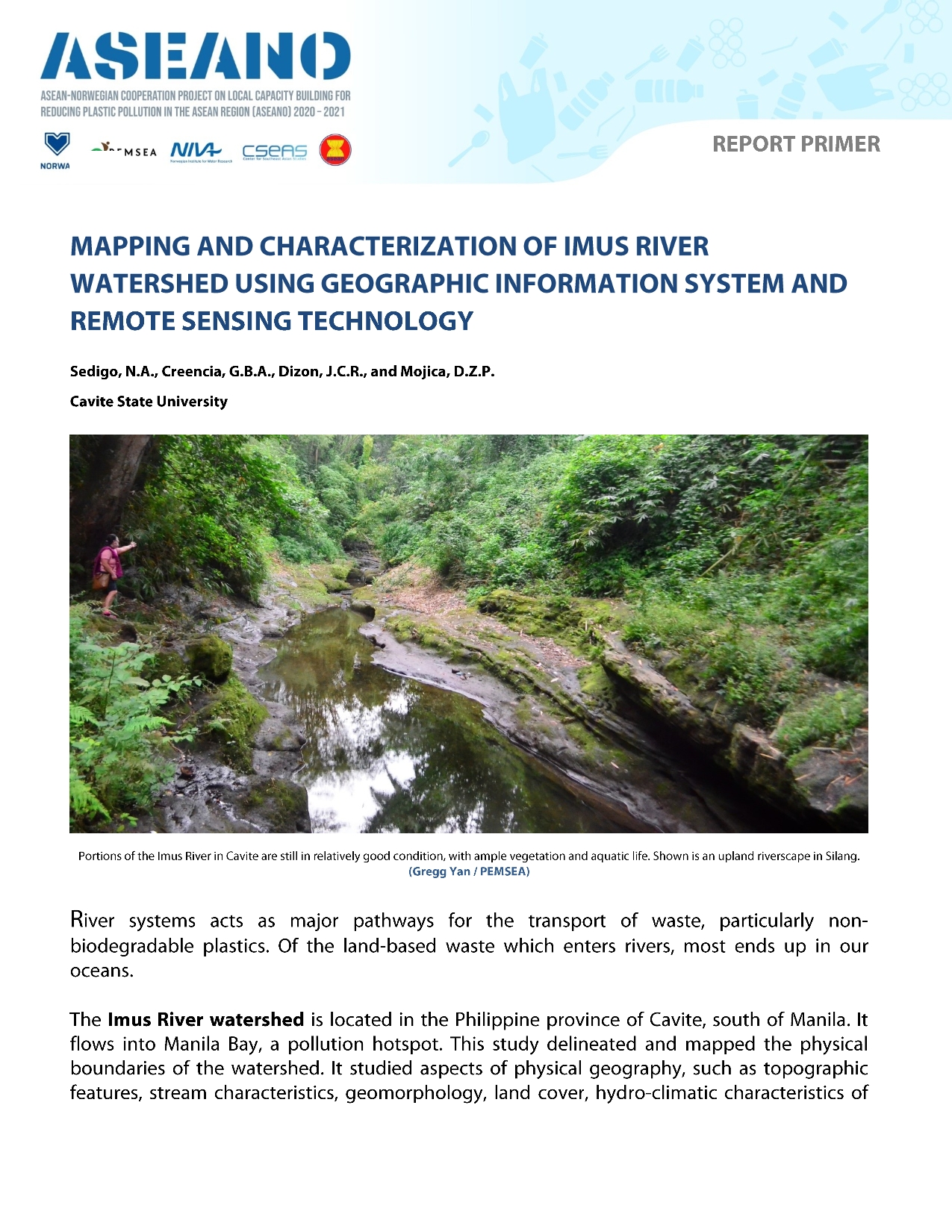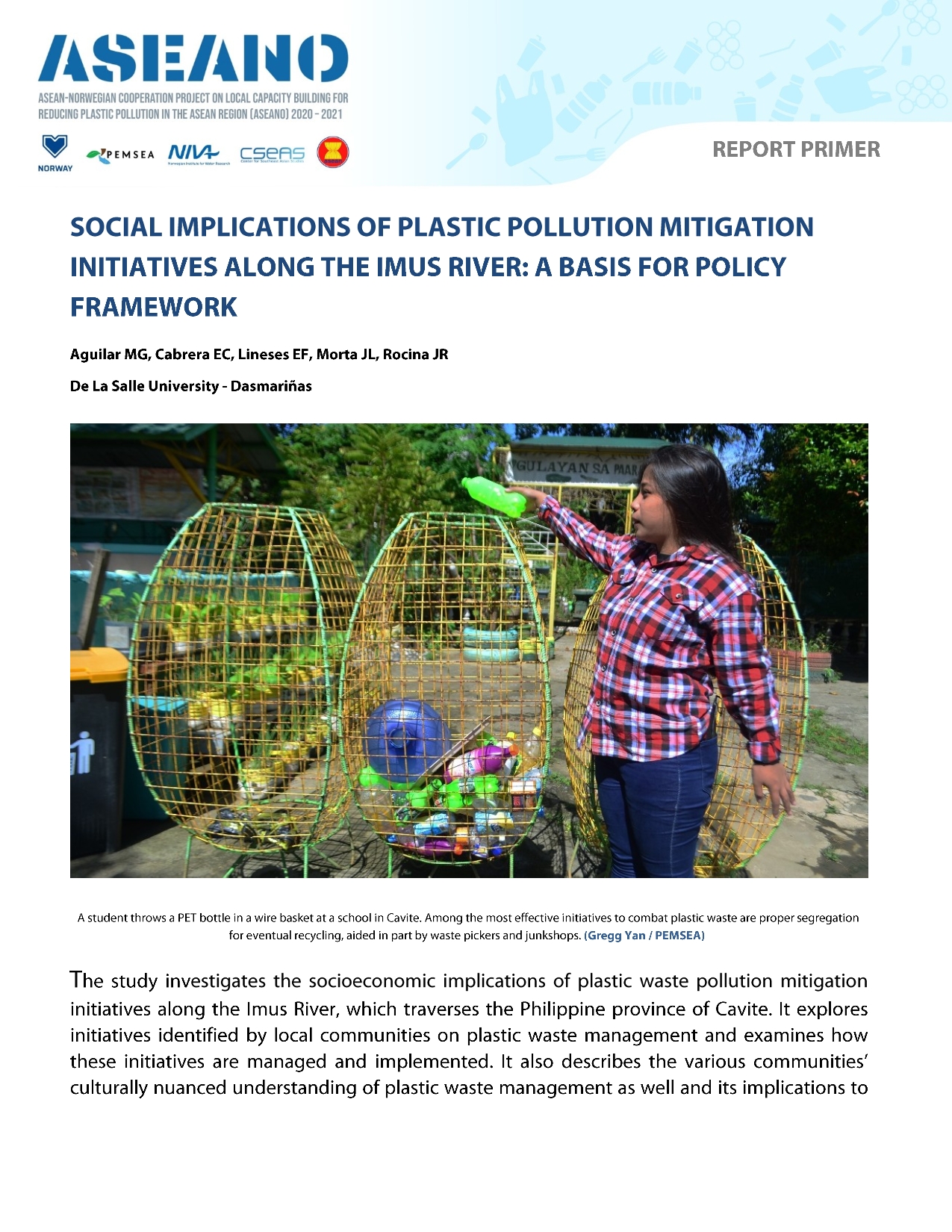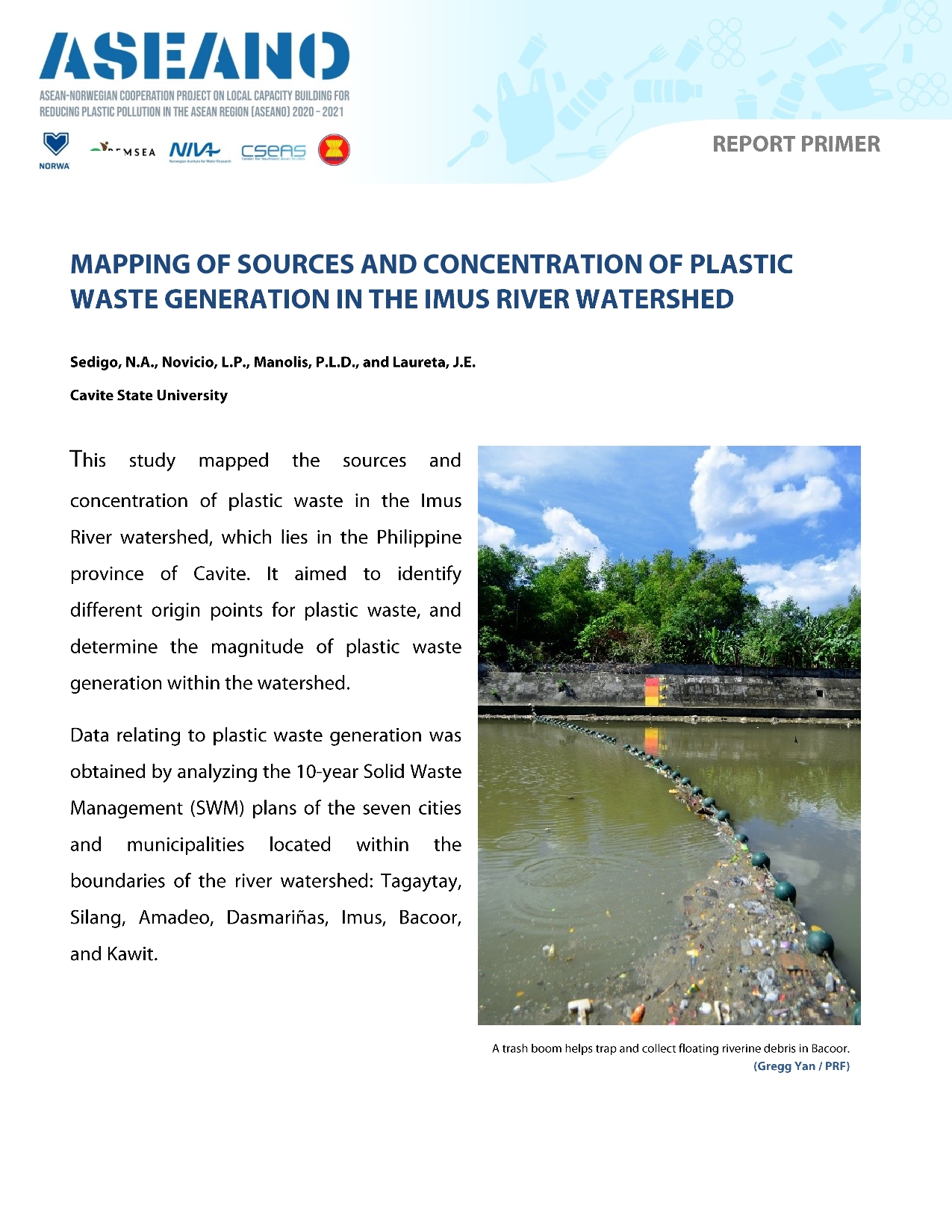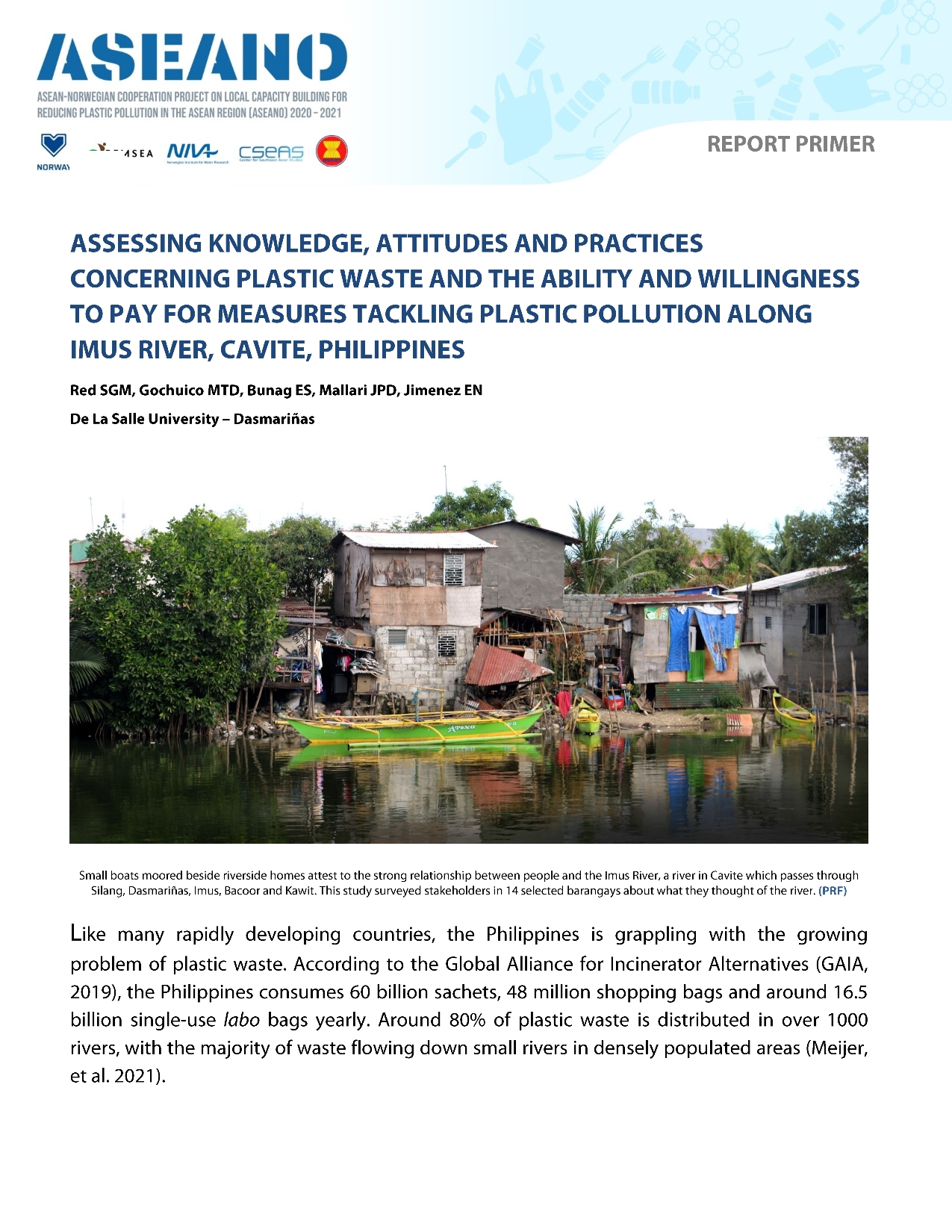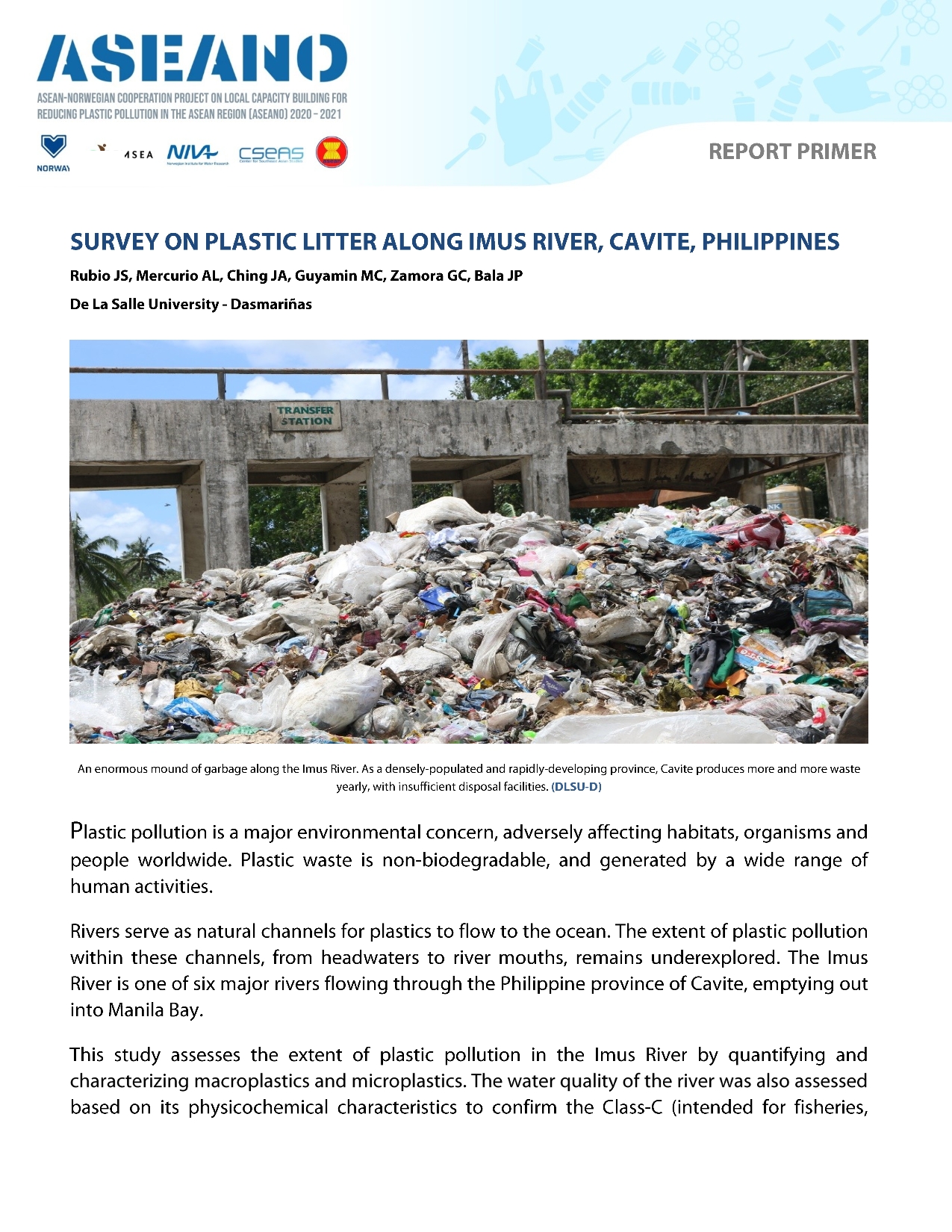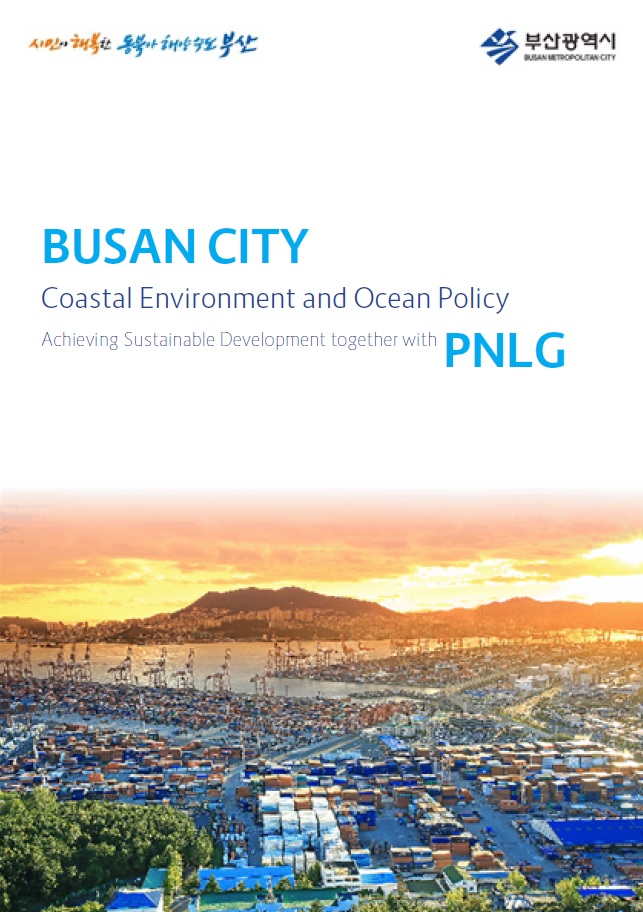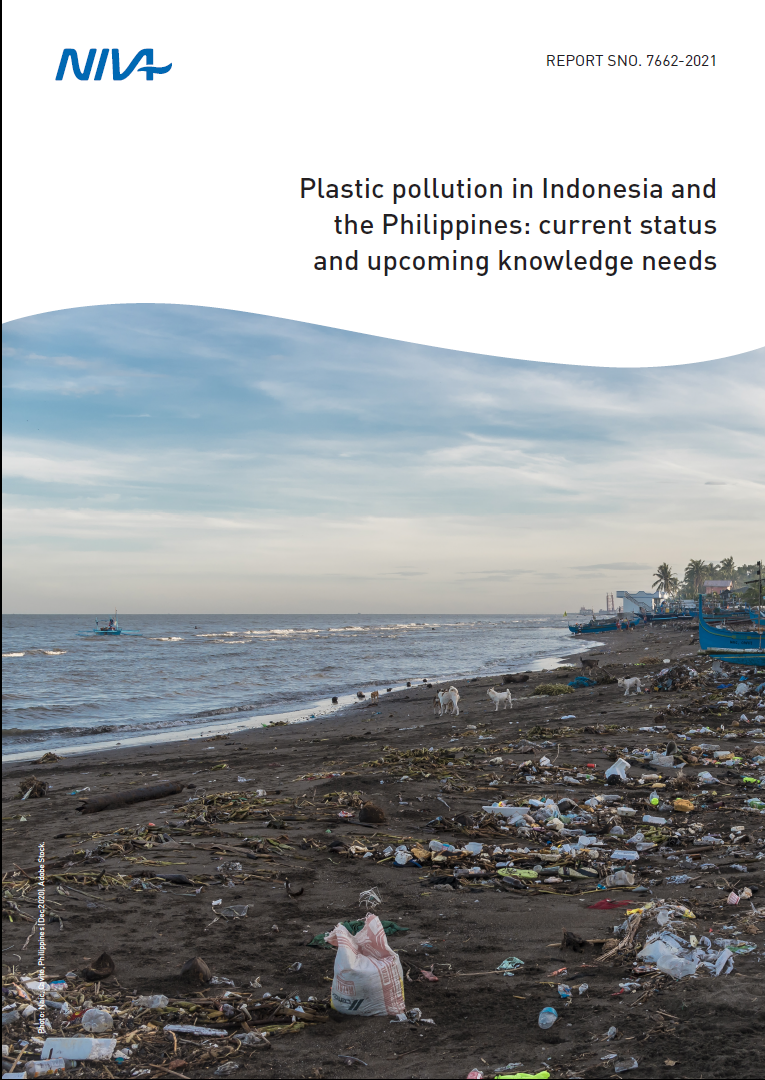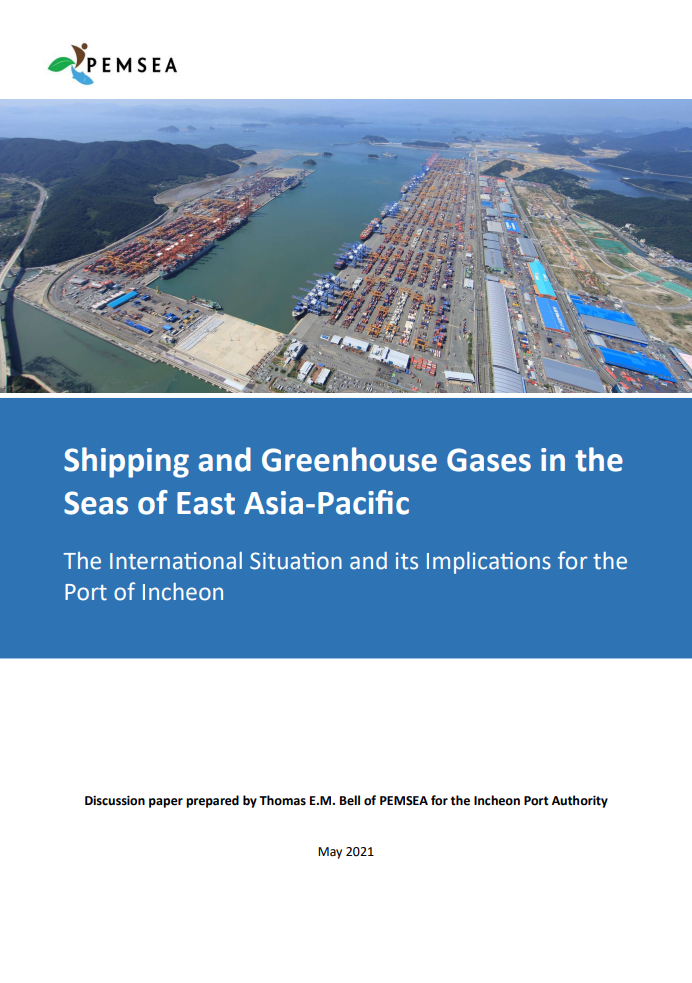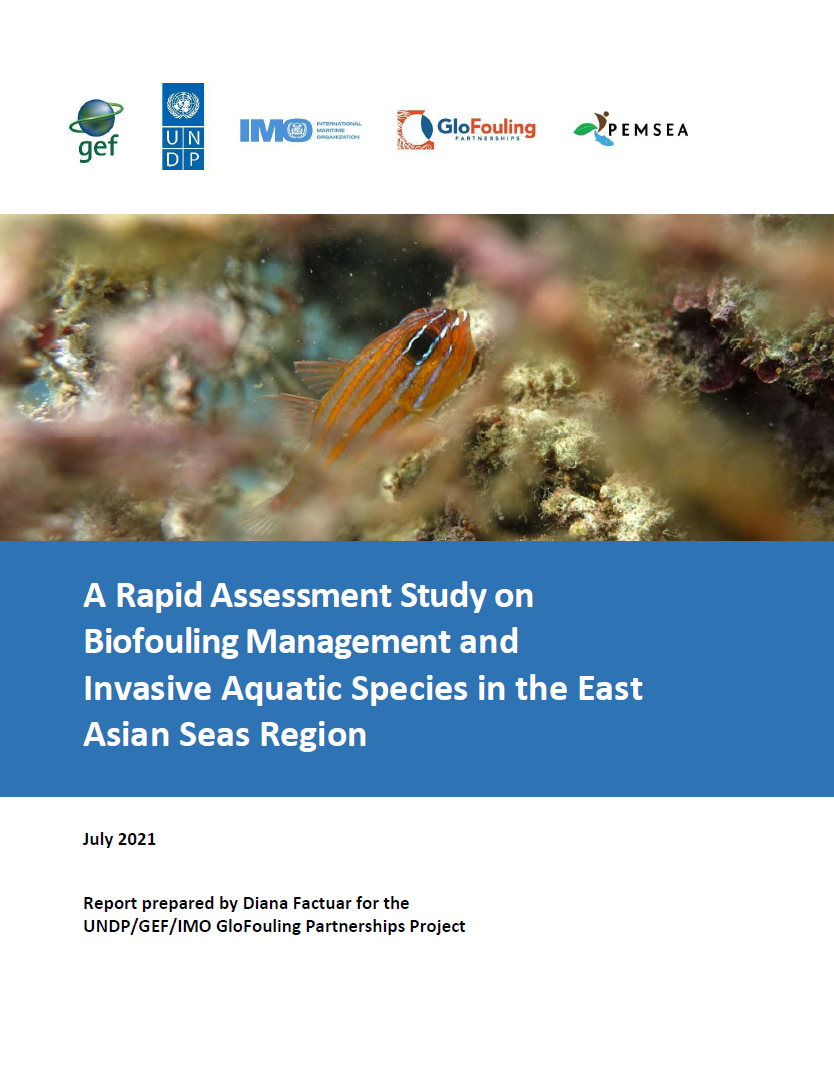
Breadcrumb
-
ASEANO Primer: Mapping and Characterization of the Imus River Watershed
Both primary and secondary data sources were used to make comprehensive land use maps, population maps, and hydro-climatic data analyses. The boundary of the Imus River watershed was established using a digital elevation model of the province of Cavite in ArcGIS. Sangley Point Synoptic Station in Cavite and the CvSU-PAGASA Agrometeorological Station in Indang were used to assess the general hydro-climatic condition of IRW due to their close proximity to the watershed.
-
ASEANO Primer: Social Implications of Plastic Pollution Mitigation Initiatives Along the Imus River
The study investigates the socioeconomic implications of plastic waste pollution mitigation initiatives along the Imus River, which traverses the Philippine province of Cavite. It explores initiatives identified by local communities on plastic waste management and examines how these initiatives are managed and implemented. It also describes the various communities’ culturally nuanced understanding of plastic waste management as well and its implications to them as Cavite residents. It is based on reports commissioned by the ASEANO project to help Local Government Units (LGUs) better understand the plastics pollution problem and develop practical and enforceable solutions.
-
ASEANO Primer: Mapping of Sources and Concentration of Plastic Waste in the Imus River Watershed
This study mapped the sources and concentration of plastic waste in the Imus River watershed, which lies in the Philippine province of Cavite. It aimed to identify different origin points for plastic waste, and determine the magnitude of plastic waste generation within the watershed. A seven-day waste characterization study in three selected barangays was conducted to determine the average amount of plastic waste generated per household.
-
ASEANO Primer: Assessing Knowledge, Attitudes and Practices Concerning Plastic Waste Along Imus River
This study targeted communities along the Imus River, one of six major water sources in the province of Cavite, a rapidly-developing province south of Manila. It determined the stakeholders’ knowledge, attitude and practices related to plastic pollution problems including the impact, management and the communities’ reasons for using plastic products. It assessed the economic value of the river by identifying and analyzing economic benefits like employment, livelihood, plus goods and services derived from the river. Lastly, it determined the ability to pay and willingness to pay of the selected communities dependent on the river for people’s daily needs.
-
ASEANO Primer: Survey on Plastic Litter Along Imus River
This study assesses the extent of plastic pollution in the Imus River by quantifying and characterizing macroplastics and microplastics. The water quality of the river was also assessed based on its physicochemical characteristics to confirm the Class-C (intended for fisheries, agriculture, and recreational use) classification of the river per DENR standards. Physicochemical parameters were correlated to the quantities of collected plastic litter.
-
Coastal Environment and Ocean Policy of Busan, RO Korea
Busan, RO Korea, the newest member of the PEMSEA Network of Local Governments (PNLG), envisions to become a smart, green city and has trained its sights on becoming the Maritime Capital of Northeast Asia.
Busan is RO Korea’s second largest city, located on the southeastern tip of the Korean peninsula, and is home to some 350 million people. Geographically, it features a coastline with beautiful beaches as well as cliffs and mountains that serve as frequent hiking destinations.
There are over 27,000 companies working in maritime-related fields, employing over 160,000 people in an industry worth USD 281.9 billion. Busan is considered the country’s seafood center and largest international fisheries hub. In 2018 alone, it exported USD 537 million worth of fisheries-related products. The Jagalchi Fish Market and Busan International Fish Market are just some local landmarks to try out. Busan is also the world’s sixth largest port and second in terms of freight.
There are three marine protected areas in Busan City such as the famous Oryukdo Islets. An important artery into the city, Nakdong River is also a protected area.
With marine litter as a major concern, Busan is focusing on source management, voluntary collection of waste by citizens, and education and awareness raising.
They will host some important events in the future such as the 7th International Marine Debris Conference (IMDC) in September 2022 and the World Expo set in 2030.
Check their Coastal Environment and Ocean Policy to find out more about how the city government works on sustainable development for its coastal and marine areas.
-
Plastic Pollution in Indonesia and the Philippines: current status and upcoming knowledge needs
Countries in Southeast Asia are major contributors of plastic waste to the oceans. It is estimated that globally, five of the eight largest contributors of plastic waste to the oceans are member states of the Association of Southeast Asian Nations (ASEAN). Despite vast media attention, there are substantial knowledge gaps and capacity needs in managing plastic leakage. Targeted science-based knowledge is warranted for sound decision making to solve the problem. Norway has taken a leading role in the international battle against marine litter and microplastic, both in terms of providing funding and in sharing knowledge. Here, we present a summary of the plastic waste management, regulatory frameworks and environmental awareness for the two countries producing the most plastic waste in the ASEAN region, Indonesia and the Philippines.
The work is undertaken as part of the ASEANO project (ASEAN-Norwegian cooperation project on local capacity building for reducing plastic pollution in the ASEAN region), led by the Norwegian Institute for Water Research (NIVA). The project is financed by the Norwegian Development Assistance Program Against Marine Litter and Microplastics, where the main objective is to prevent and substantially reduce the scope of marine litter in developing countries. The ASEANO project works to strengthen knowledge, capacity, and awareness to tackle plastic pollution from key sources in the ASEAN region by developing a strong network and close interaction with industries and businesses, governmental bodies and other stakeholders, international development organizations as well as non-governmental organizations.
This report has taken a multidisciplinary, cross-sectoral and holistic approach to summarise why and what kind of research and knowledge is needed in order to develop regional reduction measures and actions necessary for a global decrease of plastic waste pollution. This report is a collaboration between NIVA, Center for Southeast Asian Studies (CSEAS, Indonesia) and Partnerships in Environmental Management for the Seas of East Asia (PEMSEA, the Philippines).
-
Shipping and Greenhouse Gases in the Seas of East-Asia Pacific
This discussion paper on the practices and opportunities to adapt in ASEAN and East Asia for lower greenhouse gas emissions from maritime shipping was prepared by the PEMSEA Resource Facility (PRF) for the use of the Incheon Port Authority.
This is part of a larger collaboration relating to the upcoming Incheon International Ocean Forum (IIOF). This forum aims to bring together marine logistics scholars, entrepreneurs, officials, and other stakeholders from around the world to share and generate ideas on the improvement of maritime shipping.
The objective of this paper is to briefly assess the current situation and expected future pathways for maritime shipping in East Asia, and provide recommendations based on this.
The paper is broadly divided into the following sections:
1. An overview of current and expected technologies and innovations that can and will reduce greenhouse gas emissions in maritime shipping
2. The enabling policy and investments related to maritime shipping emissions in RO Korea and the rest of East Asia, both in practice and in policy
3. International standards for greenhouse gas emissions in maritime shipping, and analogous shifts that have occurred in maritime shipping
4. Actions undertaken by port authorities both in East Asia and in other areas of the world to reduce the greenhouse gas emissions associated with port activities
5. Examples of regional and international cooperation on addressing these emissions
6. A summary of the outlook for the Port of Incheon and associated recommendations -
A Rapid Assessment Study on Biofouling Management and Invasive Aquatic Species in the East Asian Seas Region
This regional stock taking report on the state of biofouling management and approaches in the EAS region served as one of the reference materials of the awareness raising seminar on the issue of minimizing the transfer of invasive aquatic species through biofouling and exchange information and knowledge on biofouling management and approaches in countries in the region. The activity is part of a series of actions that will lead to examining options for regional cooperation and the coordination of biofouling management measures and developing a strategy to promote regional harmonization of biofouling management.
Read more about PEMSEA and GloFouling.
